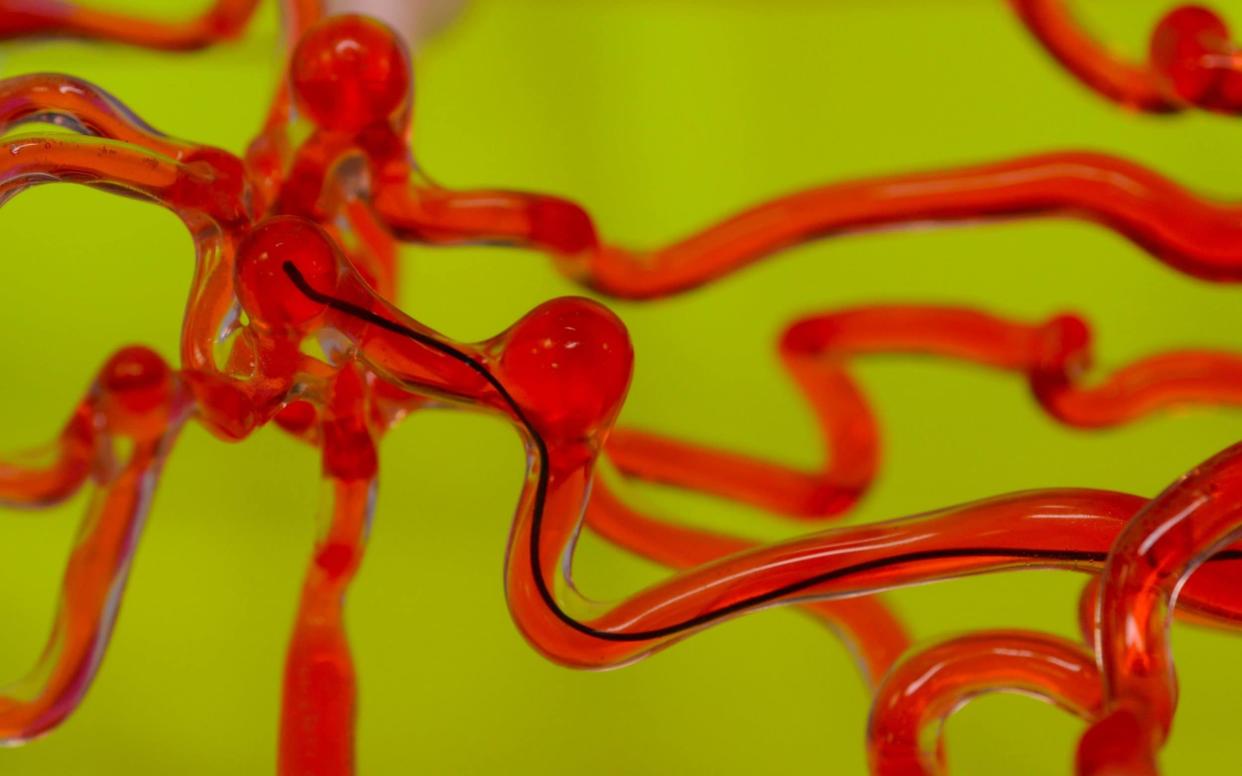Stroke-busting robotic thread that navigates the brain developed

A robotic thread capable of snaking its way through blood vessels in the brain has been developed to prevent brain damage in stroke victims.
The remote-controlled magnetic device could be guided through the brain’s labyrinthine structure to break down blood clots and deliver life-saving drugs, scientists have said.
People who suffer a stroke usually have only a short window of time - approximately one or two hours - in which treatment to prevent permanent brain damage or even save their life is most effective.
Currently, surgeons must manually insert a thin wire through the patient's leg or groin and guide it up to the brain.
It is a potentially dangerous procedure for which too few surgeons are sufficiently trained, and it also exposes the doctor to high amounts of radiation from the x-rays which map the blood vessels for them.
By contrast, the new robotic thread can be controlled via a computer operated from behind a protective screen, or indeed from a different location altogether.
The device has been successfully trialled in a silicone replica of the brain by scientists at the Massachusetts Institute of Technology.
Professor Xuanhe Zhao, one of the team, said: “If acute stroke can be treated within the first 90 minutes or so, patients' survival rates could increase significantly,"
"If we could design a device to reverse blood vessel blockage within this 'golden hour,' we could potentially avoid permanent brain damage.
“That's our hope."
The robot is made from a nickel-titanium alloy, or "nitinol," a material that is both bendy and springy.
It is then coated with hydrogel, a material that does not affect the responsiveness of the underlying magnetic particles and yet provides the wire with a smooth, friction-free, biocompatible surface.
Around 100,000 people suffer a stroke every year in the UK, with roughly two-thirds of those who survive leaving hospital with some form of disability.
The new findings are published in the journal Science Robotics.


